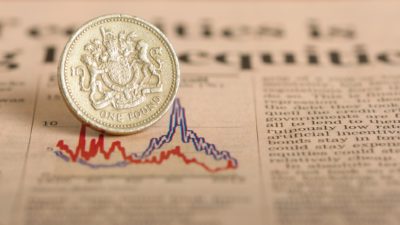Passive income is money I earn without having to work for it. That may sound like a fantasy but, in fact, it is a practical financial technique used by millions of people.
For example, my approach to earning passive income consists of building up a portfolio of shares I hope will pay me dividends in future. Dividends are spare money a business has generated that it chooses to pay out to shareholders.
I like this approach because I can use whatever spare funds I have based on my own financial circumstances to benefit from the business success of large, blue-chip names.
Passive income stocks: our picks
Do you like the idea of dividend income?
The prospect of investing in a company just once, then sitting back and watching as it potentially pays a dividend out over and over?
If you’re excited by the thought of regular passive income payments, as well as the potential for significant growth on your initial investment…
Then we think you’ll want to see this report inside Motley Fool Share Advisor — ‘5 Essential Stocks For Passive Income Seekers’.
What’s more, today we’re giving away one of these stock picks, absolutely free!
Here is how I would put such a plan into action if I had £10 a week to spend on it.
Getting ready to invest
My first move would be to set up a share-dealing account, or Stocks and Shares ISA.
I could start putting my regular £10 into that immediately, so that once I had saved enough and identified some shares I wanted to buy, I would be ready to act.
Saving a tenner a week would give me £520 a year to invest. I think the discipline of regular saving could also help me build up healthy financial habits.
Choosing shares to buy
Next would be to find dividend shares I wanted to own. Not all companies pay dividends, even if they have done so in the past. This year, for example, Direct Line suddenly axed its shareholder payout.
That helps explain why I always diversify my portfolio across a variety of businesses. But I also do my own research and try to find attractively priced shares I think could offer me strong passive income prospects.
Part of that involves finding firms I think have a long-term competitive advantage in an area I expect to see ongoing customer demand. Consumer goods firm Unilever is an example. There is only one Marmite (no matter what proud Aussies may claim about their local equivalent, Vegemite), meaning the brand’s owner Unilever has pricing power. It can charge a premium for the dark yeast extract and many loyal customers will still be willing to pay the price.
But just finding a business that looks set to keep generating healthy profits does not mean I will buy its shares. Some successful companies like Google owner Alphabet reinvest profits in their business rather than paying them out as dividends. I own Alphabet shares, for their growth potential. But if my focus was on maximising my passive income, I would not choose to buy them.
Price also matters. Even a strong business can be overpriced. Paying too much for a share can be a poor investment, even if the company performs well in future.
Dividend yields
The price I pay also matters because it helps determine my dividend yield. Yield is basically the dividends I earn each year expressed as a percentage of what I pay.
If I invest £520 at a 5% yield, for example, I will hopefully earn £26 in annual passive income.
Over time this could grow – I will still be contributing weekly while shares I already own may raise their dividends. Some may cut them too, but by diversifying among carefully chosen, promising businesses I could hopefully earn income for decades to come.








